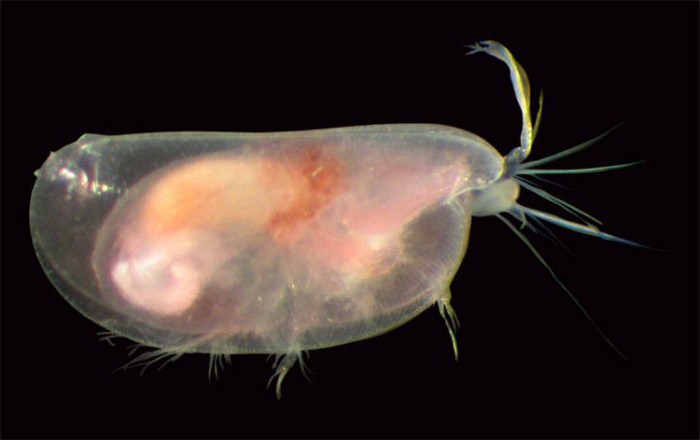What is the significance of crustaceans for humans? Positive and negative. This answer will be only true. After all, they serve as food for animals and humans, and some are also the subject of fishing. But some crustaceans lead a parasitic lifestyle and are intermediate hosts for helminths. The features of life, the classification and significance of these arthropods, we will consider in the article.
Type crustaceans
Representatives of this subtype of arthropods are very diverse. This determines the value of crustaceans for humans: positive and negative.
Despite this, all of them have common structural features. Crustaceans (the photo below shows the crab) have a body consisting of the cephalothorax and abdomen, to which the limbs are attached. On the head are two pairs of antennae. The respiratory organs are the gills, the discharge is the green glands.
Inhabited in fresh and salty water bodies, crustaceans feed on both plants and small animals.
Higher crayfish
Representatives of this class are crayfish. For their habitat, they choose clean running water with a high oxygen content. In the afternoon they hide in burrows, under stones and logs. This is where people catch them. Crayfish meat has valuable nutritional properties. For this reason, the number of populations of many species has recently been sharply reduced. A wide-fingered crayfish is even listed in the International Red Book.
At night, the crayfish leave their shelters and go hunting. These organisms are absolutely omnivorous. They like worms, shellfish, and tadpoles. Moreover, both the living and the dead. Crayfish do not refuse from aquatic plants. People often breed decorative species in aquariums. In captivity, crayfish can be fed with bread, vegetables and even meat.
Commercial higher crayfish include lobsters, crabs, spiny lobsters and shrimps. In the best restaurants in the world, dishes from them are in great demand, although not everyone can afford them.
Amphipods and water donkeys are a valuable food for many species of river and sea animals. Woodlice, living in moist soil and forest litter, loosen them, enrich them with organic substances, improve plant nutrition and respiration.
Gill crayfish
These are the inhabitants of fresh water bodies, whose head is sufficiently separated from the body. These include small Daphnia crustaceans, which are also called water fleas. Together with other aquatic organisms, they are part of plankton, which is located in the upper layers of the reservoir.
Man artificially receives daphnia on an industrial scale for fish feed. Often they are used to increase species diversity in aquariums.
Using daphnia test the level of toxicity of fresh water. These organisms are very sensitive to the content of salt solutions. They first cause a slowdown in motor activity. After the crustacean, they either sink to the bottom or freeze at the surface.
Jawbone class
The importance of crustaceans for humans, positive and negative, are also representatives of the jaw-leg class. It has long been used by Daphnia and the Cyclops as a valuable feed in the rearing of juvenile commercial fish. Parasitic carnivores are also crustaceans. They feed on the blood of fish, often causing significant damage to the fishery.

Many species of cyclops are intermediate hosts for parasitic flatworms. For example, a broad ribbon from an egg turns into a larva. It is called coracidium. Such a spherical larva floats freely in the water until it is swallowed by crustaceans. So they become the first intermediate hosts of parasites. The second are inevitably predatory fish that feed on crustaceans. Larvae enter the human body when eating poorly fried or raw fish. There they attach to the thin intestinal mucosa, and after 4 weeks become capable of reproduction. The length of this worm can reach ten meters! But the main danger is that with a prolonged presence of a parasite, a person develops anemia disease. Worm excretion products inhibit the formation of vitamin B12, which is necessary for the formation of red blood cell hemoglobin. Dangerous symptoms of the disease are general weakness, decreased performance, hypotension, increased heart rate, frequent headaches and dizziness. It is necessary to pay attention to these manifestations and consult a specialist for examination.
The value of crustaceans for humans: positive and negative
One cannot say unequivocally about the significance of crustaceans in nature. Of course, an important positive point is that all of them are an important link in the food chains, are able to filter out small algae and bacteria from the water. It is known that the symbiosis of a hermit crab with coral polyps brings them mutual benefit. Many species are eaten by humans. However, some of them participate in the life cycle of parasites and attack rotifers and their own classmates.
Thus, crustaceans are animals that people widely use in their life, which ensures their important role in nature.